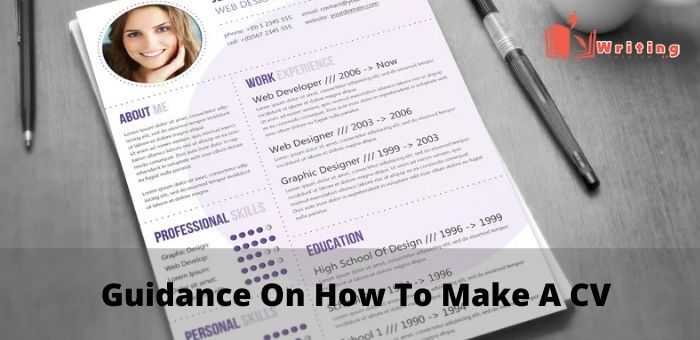A Full Guide On How To Create A Perfect CV
Are you a university graduate who needs an opportunity to make a living for himself but doesn’t know how to make a perfect CV.? No problem because we are here with an interesting article on creating an ideal CV by yourself. Yes, by yourself, we have researched and have gotten help from multiple parties and have come up with this fantastic article for all graduate people who don’t know what a perfect CV format or template looks like.
What is a CV?
A CV, defined as a curriculum vitae, is a paper used when applying for employment. It enables you to paraphrase your education, skills, and experience, empowering you to sell your abilities to potential companies strongly. Alongside your CV, management also usually asks for a cover letter. In the USA and Canada, CVs are associated with résumés. These papers tend to be more concise and follow no particular formatting rules.
How long should a CV be?
A regular CV in the UK should be no deeper than two sides of A4. That said, one area doesn’t fit all. For instance, a school leaver or recent bachelor with the slightest experience may want to use one side of A4. A three-page CV might be needed for high-level professions or people who have obtained a lot of experience or worked in various jobs over the last 5 to 10 years. For instance, some pharmaceutical or academic CVs may be higher depending on your expertise. While it’s essential to keep your CV short, you should further evade selling your experience little.
What to include in a CV
This session will tell you what you should add to your CV before applying for a Job.
Contact details
Insert your complete name, home location, mobile number, and email id. Your date of birth is unnecessary, and unless you’re employed for an acting or modeling job, you don’t need to include a photograph.
Profile
A CV form is a short description that highlights your key characteristics and helps you stand out from the pack. Generally placed at the start of a CV, it pulls out a few actual accomplishments and experiences while showing your career aims. A good CV form focuses on the sector you’re applying to, as your cover letter will be job-specific. Keep CV personal statements short and snappy; 100 words is the perfect length. Discover how to write personal information for your CV.
Education
Register and date all primary education, including expert qualifications. Place the various recent first. Include requirement type/grades and the dates. Mention particular modules only where relevant.
Work experience
Enter your work activity in opposite date order, ensuring that anything you discuss is related to the job you’re employing for. Enter your position title, the company’s name, how long you were with the company, and critical duties. If you have an abundance of relevant work practice, this section should come before education.
Skills and Accomplishments
This is where you discuss the different styles and the IT sets you can effectively use. The fundamental skills that you place should be related to the job. Don’t overestimate your capabilities, as you’ll want to back up your requirements at the meeting. If you’ve got loads of job-specific skills, you should do a skills-based CV.
Interests
‘Socialising,’ ‘going to the cinema,’ and ‘reading’ isn’t going to catch a recruiter’s attention. However, relevant interests can provide a complete picture of who you are and give you something to talk about at the interview. Examples include writing your blog or community newsletters if you want to be a journalist, being part of a drama group looking to get into sales, and your involvement in climate change activism if you’d like an environmental job.
CV format
- Avoid titling your’ curriculum vitae’ or ‘CV.’ It’s a loss of space. Alternatively, let your name work as the title.
- Section titles are an excellent idea to break up your CV. Guarantee they reach out by making them larger and bold.
- Evade fonts such as Comic Sans. Pick something acknowledged, clear, and easy to understand, such as Arial, Calibri, or Times New Roman. Utilize a font size between 10 and 12 to make positive that latent employers can understand your CV. Ensure all fonts and font sizes are constant throughout.
- List everything in reverse chronological order. Then the recruiter sees your work history and most recent achievements first.
- Keep it concise by using precise spacing and bullet points. This type of CV layout allows potential employers to skim your CV and quickly pick out important information first.
- Name the document when saving – Don’t just save as ‘Document 1’. Make sure the title of the record is professional and identifies you, such as ‘Joe-Smith-CV.’
- Unless the work advert events separately (for instance, it may ask you to give your CV and covering letter as a Word text), save with a . PDF file to make sure it can be presented and read on any device.
Wrapping Up
And that’s all, folks, and we hope you will love this and have gained an insight on how to make a perfect CV for yourself. Still, if you think you are facing some difficulty, you can check our CV writing services in Dubai no matter where you live in the whole world, we have all the languages covered for all of you. And If you have some doubts about the associated topic, mention them in the comment box or contact us Through our website, and we will get back to you as fast as possible. Until then, see you next time. Goodbye.


